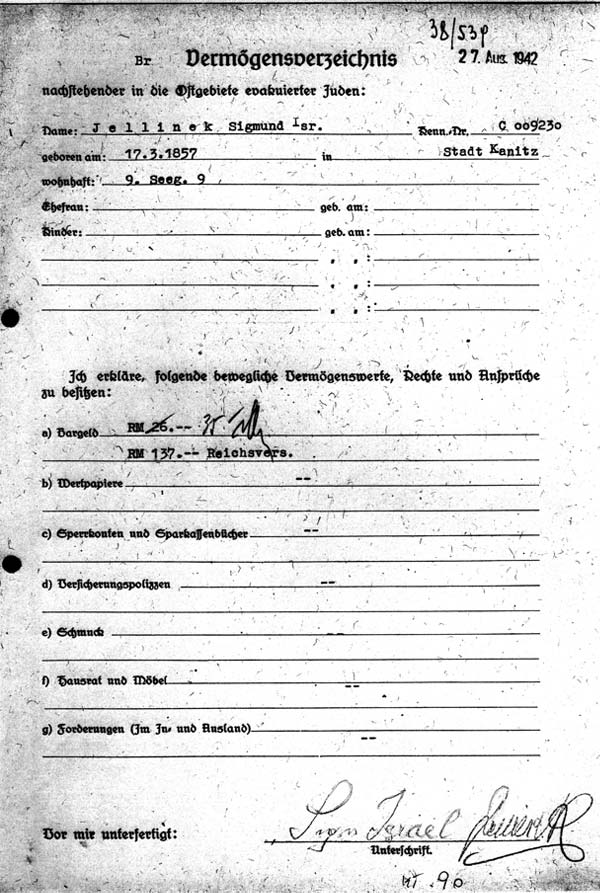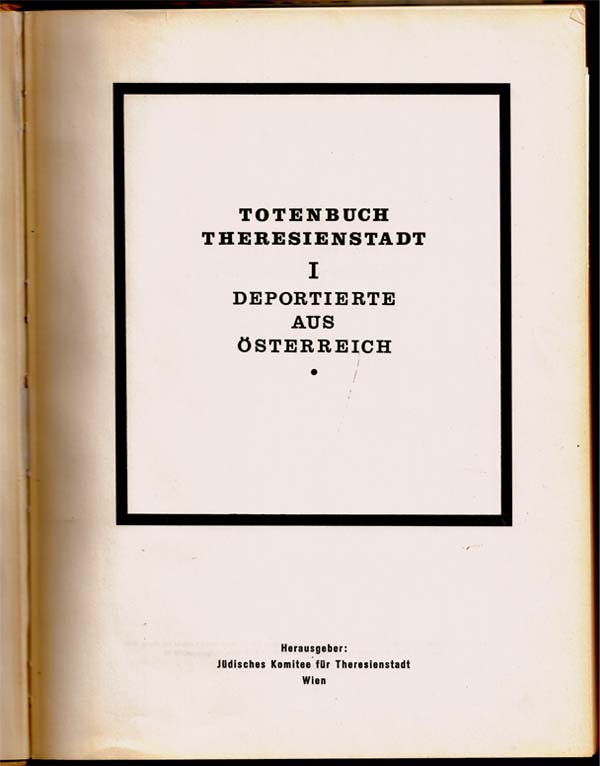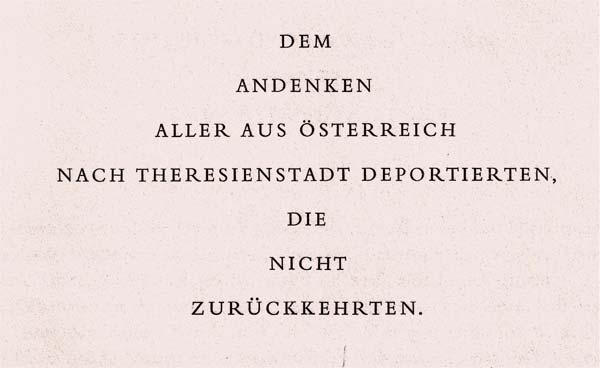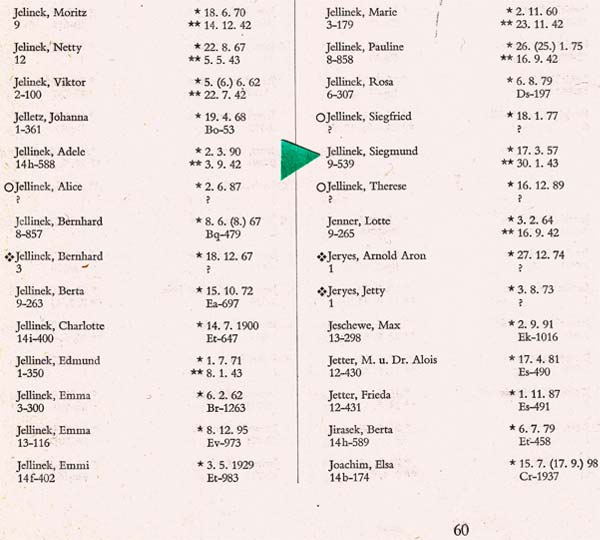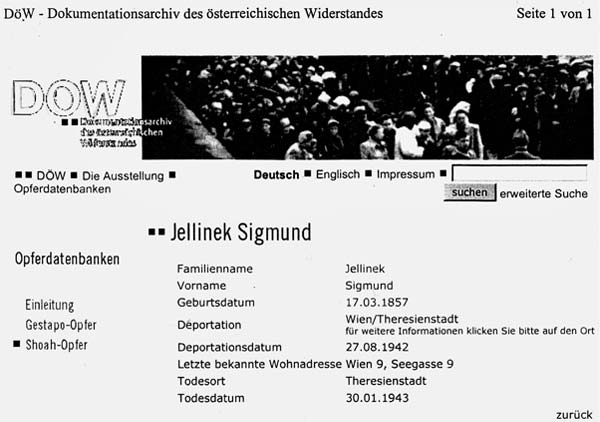The reader can derive meaningful context for the documents below, from Siegmund Jellinek’s Biography page and from the first two pages of Leonore Schafer’s letter of October 7, 1952, in which she reports on her own and Siegmund’s experiences in the Theresienstadt concentration camp.
English translations of the German text in the five following documents appear in parentheses and/or in purple. Boldface and italics, respectively, indicate numerals and words cited from the German or Czech texts. As usual, bolded words in blue indicate a hyperlink.
Translations and Explanations:
Vermögensverzeichnis (Asset Declaration) and the Totenbuch Theresienstadt: Deportiert aus Österreich (Theresienstadt Book of the Dead: Deported from Austria). (The Totenbuch Theresienstadt hyperlink above, will take the reader to this book’s full bibliographic listing in this website’s Sources section.)
The subtitle of the Vermogensverzeichnis: [the] (following are Jews evacuated to the Eastern Territories)
In the upper right area, we see the hand-written numerals “38/539” and the stamped date of Aug. 27, 1942, the date that the transport departed from Vienna.
The Theresienstadt Book of the Dead explains in its preface that this transport’s full identification code was “IV/9 28. 8. 42 1000.” “IV” was used to identify every one of the approximately 50 transports from Vienna to the Theresienstadt concentration camp., from June 1942 to April 1945. The “9” indicates that this transport was the ninth transport that departed from Vienna to Theresienstadt. The August 28, 1942 date that follows, is the date of arrival in Theresienstadt, a day after the transport’s departure from Vienna, as was usual.
The numeral 1000 indicates the total number of persecuted persons who ‘boarded’ this transport. The numeral “539” indicated that Siegmund J. was the 539th person to ‘board,’ out of the total of 1000 people. The reader can see on page 60. of the Totenbuch Theresienstadt, (the second document shown below) that “9 - 539” appears under Siegmund’s name, as well. It is unclear what the “38,” hand-written before the “539” at the top of the Asset Declaration, signifies.
On the next line we see that Siegmund’s first name (spelled “Sigmund” here) is followed by “Isr.” an abbreviation for “Israel.” We also see that Siegmund inserted “Israel” as his middle name in his signature on the bottom of this document, preceded by the German words translated as signed in front of me: In August 1938, the Nazi regime had ordered that all Jews whose names were not recognizable as “Jewish” adopt the middle name of “Israel” (for Jewish men) or “Sara” (for Jewish women). In Mathilde/Manzie Eckstein’s Asset Declaration, we see that “Sara” was added to her name.
We do not know what kind of identification is referenced in the “Kenn. Nr.” (abbreviation for Kennzahl Nummer - code or identification number) at the end of this first line.
Siemund’s date of birth, (March 17, 1857) and location of birth, the (town of Kanitz) are typed in the second line. Kanitz was in the South Moravian region of the Austro-Hungarian Empire when Siegmund lived there, but today, is in the Czech Republic and is called Dolni Kounice. It is just 15 1/2 miles (25 km.) south of the major Czech city of Brno, in which Hugo Jellinek found ref-uge in 1938, and where Jellinek relatives, such as Siegmund’s brother Eduard and his descendents lived before their deportation or emigration. Jews lived in this small, old town of Kanitz from the late 14th or early 15th century until 1942, when the remaining, greatly diminished community of 53 Jews were deported and murdered in the Nazi killing centers.
Siemund’s last address on Seegasse (the narrow street or lane) named See (lake) is typed on the next line that asks where Siegmund was a resident. The numeral “9” before the street address denotes the 9th district of Vienna.
The heading of the second section of the Vermögensverzeichnis: I declare that I have the following movable assets, rights and claims: Siegmund declared 35 Reichsmarks in cash (corrected from 26 RM and initialed) and 137 Reichsmarks in Empire Insurance.
The absence of entries on the remaining lines: securities, blocked accounts and saving books, insurance policies, household good and furniture, jewelry, or receivables (money owed to him) in the Third Reich or abroad indicate that Siegmund did not declare any of those assets.

